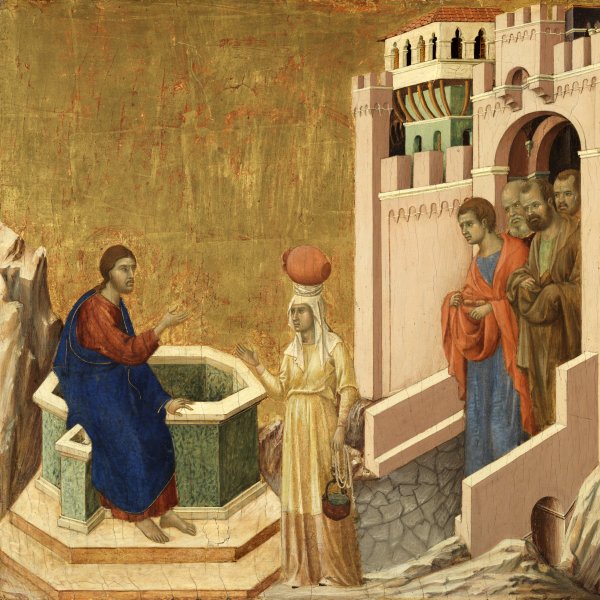Duccio di Buoninsegna
Duccio was an artist of the Sienese school and its most important representative in the 13th century. Almost no information survives regarding his training and life although it has been suggested that he was a pupil of Guido da Siena or of the Florentine master Cimabue. The first documented reference to the artist dates from 1278 and refers to a series of minor works commissioned from the artist, suggesting that he enjoyed a solid reputation by that date. Duccio worked as a painter and miniaturist. The first known work by his hand is the Rucellai Madonna of 1285 for the church of Santa Maria Novella in Florence. This panel (Galleria degli Uffizi, Florence), depicts the Virgin in majesty, seated on a throne with the Christ Child on her knee and surrounded by angels. Its style and composition can be related to the work of Cimabue. Other works attributed to Duccio include The Crevolli Madonna of 1280 (Museo dell’Opera del Duomo, Siena), and two triptychs of around 1300 (National Gallery, London, and Museum of Fine Arts, Boston). Duccio’s style is notable for the humanity and expressivity of the figures and for his innovative use of line and colour. In 1308 he began work on his most ambitious project, The Maestà, an altarpiece painted on both sides for Siena cathedral. Completed in 1311, its central motif was the Virgin and Child surrounded by angels and saints. The front face has episodes from the life of the Virgin and angels on the pinnacles, while at the lower front edge was a predella with scenes from the life of Christ alternating with figures of prophets. On the back were twenty-six episodes from the life of Christ and another nine on the predella. This ambitious work, which was installed in the Duomo with great pomp and ceremony, was dismantled in the 18th century and its panels separated. Some of them are now to be found in museums, including the National Gallery, London, the Museo dell’Opera del Duomo, Siena, and the National Gallery of Art, Washington.




